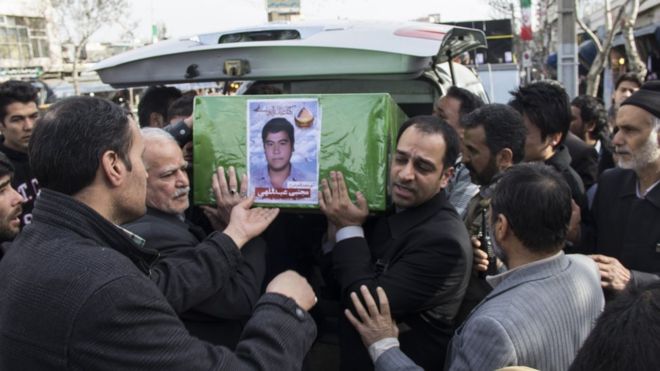
As the five-year conflict in Syria grinds on, BBC Persian has found evidence that Iran is sending thousands of Afghan men to fight alongside Syrian government forces.
The men, who are mainly ethnic Hazaras, are recruited from impoverished and vulnerable migrant communities in Iran, and sent to join a multi-national Shia Muslim militia – in effect a “Foreign Legion” – that Iran has mobilised to support Syrian President Bashar al-Assad.
Many have since fled the battlefield and joined the refugee trail to Europe.
In a small town in Germany, we meet “Amir”, an Afghan man in his early twenties.
He was born to refugee parents in Isfahan, Iran, and is now himself an asylum seeker in Europe.
Like most of the almost three million Afghans in Iran, he lived as a second-class citizen.
Without legal residency or identity documents, he found it hard to get an education or a job. Fear of arrest and deportation was a daily reality
It was difficult to move around freely, get a driving license or even buy a Sim card for his mobile phone.
But one day, Amir received an offer that changed everything.
“Some Afghans, who were close to Iran’s Revolutionary Guards, approached me and my mates at the mosque,” he said.
“They suggested we go to Syria to help defend the Shia holy shrines from Daesh,” he added, using an acronym for the previous name of the jihadist group Islamic State (IS).
“They said we’d get passports and have an easy life afterwards. We’d be like Iranian citizens and could buy cars, houses…”
Bullet holes
Amir was drafted into the Fatemioun Brigade, an all-Afghan unit commanded by Revolutionary Guards officers.
The training, he says, was very short – a fortnight of tactical movement and basic weapons handling – and conducted in strict secrecy
“The night we entered the base at Qarchak, near Varamin in Tehran province, all our mobile phones were confiscated – and after two weeks’ basic training, we were driven to the airport in buses with blacked-out windows,” he said.
Despite having no ,passports the Afghan recruits were flown directly to Syria on specially chartered jets.
“Everything was taken care of by the Revolutionary Guards,” he said. “When we arrived, we saw the bullet holes and shell damage. It was a war zone. What I did and saw there affects me still. I can’t sleep – I get angry for no reason.”
Prof Scott Lucas of Birmingham University in the UK has been closely following Iranian involvement in Syria.
He says the first Afghan militias began to arrive in 2012.
“The Iranian Revolutionary Guards Corps decided that the Syrian military could not succeed on their own,” he told the BBC. “The frontlines were too depleted and men were trying to avoid conscription.”
The Iranians decided to set up a 50,000-strong National Defence Force to fight alongside the Syrian army.
With a shortage of willing fighters inside Syria, they began looking elsewhere – signing up Iranian Afghans, Lebanese, Iraqi and Pakistani Shia recruits.
‘Blown to pieces’
As we travelled across Europe, we met many Afghan ex-fighters like Amir, and all told similar stories.
For More: http://www.bbc.com/news/world-middle-east-36035095












